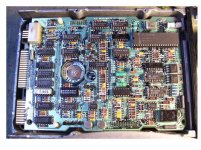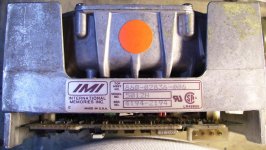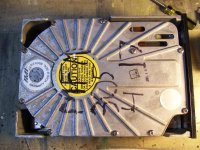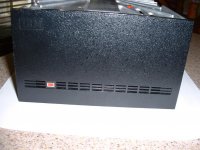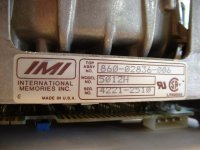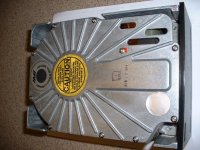sombunall
Experienced Member
I have an International Memories Inc. 5012H hard disk that I want to exercise. I haven't used it in a few years. I had an 8 bit Xebec controller that it plugged into. During a recycling run, I recycled the controller because I thought I could just use BIOS type 1 in an AT BIOS if I wanted to because I thought all 10 meg drives used those settings. I am wiser than that now.
On the drive I wrote 305, 4, 17. I guess I must have gotten this from disk manager but I'm not 100% sure. I found this table on the internet:
http://alasir.com/books/hards/06-68.gif
But the fields are blank and it says it is 15 megs and not 10 megs?
I do see the 5012 is 306, 4, 17, WP=214, RWC=307
Which brings me to another thing I need explained. In an AT BIOS I could specify the settings for write precompensation (WP) but what about reduce writing current (RWC)?
I have a few controllers, one is the WD1002A-WX1, I think the super BIOS version.
http://stason.org/TULARC/pc/hard-disk-floppy-controllers/U-Z/WESTERN-DIGITAL-CORPORATION-Two-MFM-ST506-412-driv-221.html
I have 10MB heads=4 cyl=306 WP=0 RWC=153 on that controller. But will it work? Is there no way to specify RWC in an AT BIOS without a specialty Xebec controller? Assuming I could even find out what the settings are for this HDD?
ALSO! Carlsson has this drive http://www.vintage-computer.com/vcforum/showthread.php?3085-PET-collection/page3



On the drive I wrote 305, 4, 17. I guess I must have gotten this from disk manager but I'm not 100% sure. I found this table on the internet:
http://alasir.com/books/hards/06-68.gif
But the fields are blank and it says it is 15 megs and not 10 megs?
I do see the 5012 is 306, 4, 17, WP=214, RWC=307
Which brings me to another thing I need explained. In an AT BIOS I could specify the settings for write precompensation (WP) but what about reduce writing current (RWC)?
I have a few controllers, one is the WD1002A-WX1, I think the super BIOS version.
http://stason.org/TULARC/pc/hard-disk-floppy-controllers/U-Z/WESTERN-DIGITAL-CORPORATION-Two-MFM-ST506-412-driv-221.html
I have 10MB heads=4 cyl=306 WP=0 RWC=153 on that controller. But will it work? Is there no way to specify RWC in an AT BIOS without a specialty Xebec controller? Assuming I could even find out what the settings are for this HDD?
ALSO! Carlsson has this drive http://www.vintage-computer.com/vcforum/showthread.php?3085-PET-collection/page3

